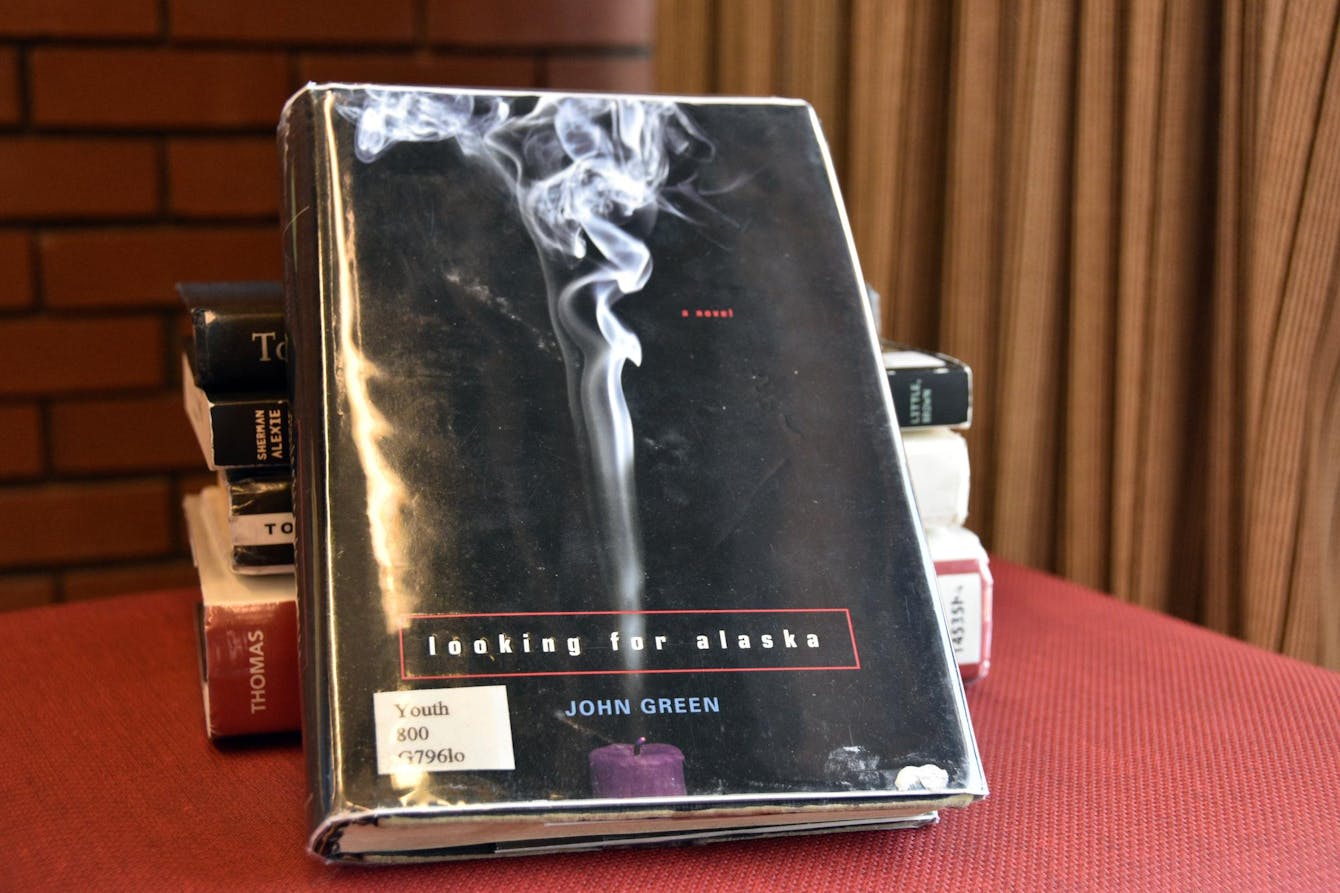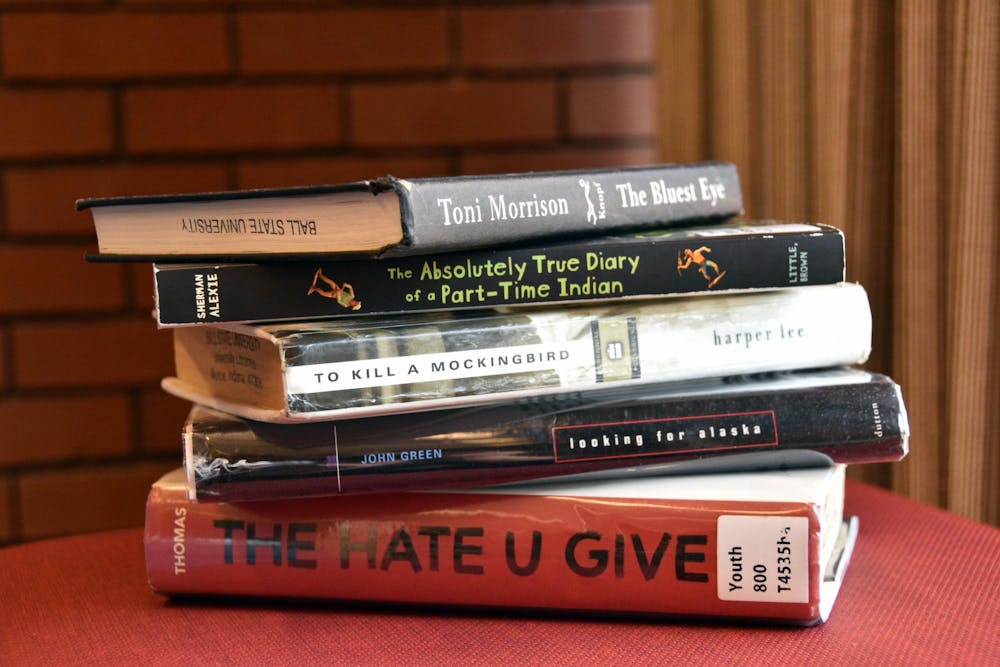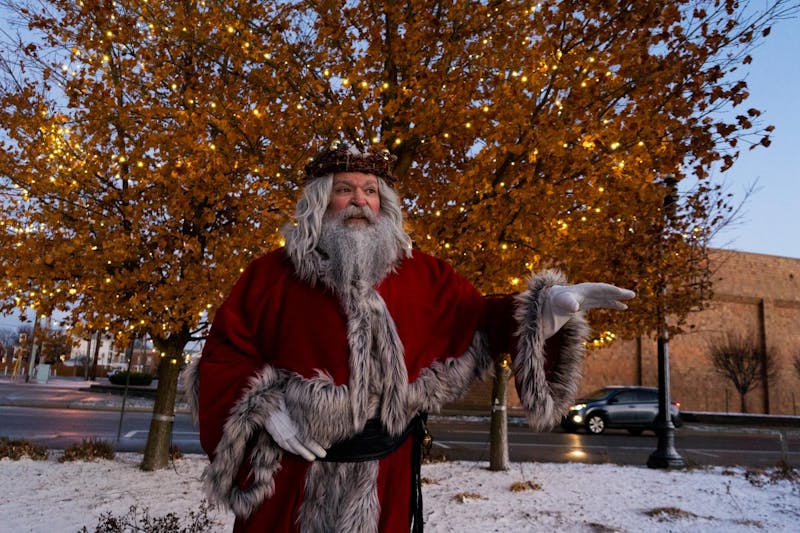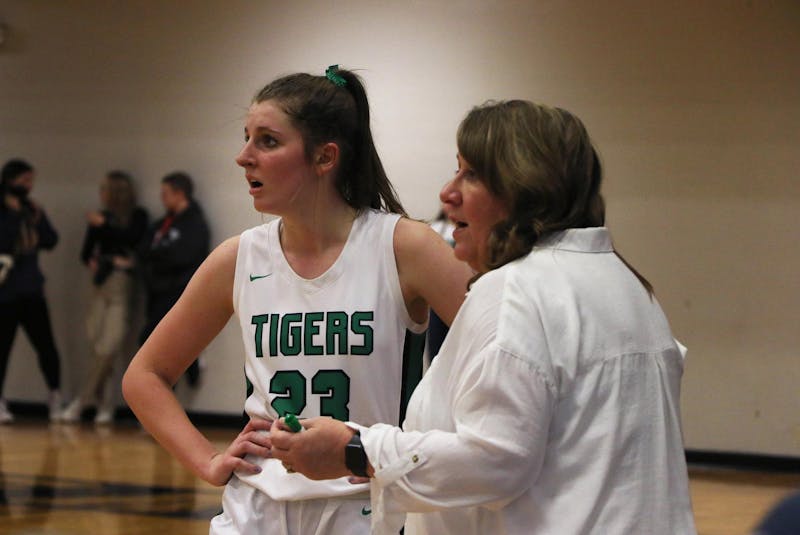With recent news of books being banned in public schools, academic libraries and public libraries, many authors, like Indiana’s John Green, are expressing their disapproval. In August 2023, the Hamilton East Public Library reshelved its teen section, and books like Green’s “Fault in Our Stars” were no longer on the shelves due to being deemed not “age appropriate.”
According to PEN America, an organization dedicated to uniting writers, celebrating creative expression and defending free speech liberties, over 4,000 book bans have occurred in the United States since fall 2021. PEN America stated an “overwhelmingly” large number of the books targeted for bans are stories by and/or about people of color and LGBTQ individuals. With these books leaving classrooms and shelves, here’s a list of banned books to read:

"Looking for Alaska" by John Green posed on Sept. 29 on the second floor of Bracken Library. The book has been contested for LGBTQ content and claims that it's "sexually explicit." Ella Howell, DN
“Looking for Alaska” by John Green
Published in March 2005, the coming-of-age story follows the main character Miles “Pudge” Halter and his time at a boarding school where he is seeking a “Great Perhaps,” the last words of François Rabelais. Halter gains close friendships with Chip “The Colonel” Martin, Alaska Young and Takumi Hikohito.
The book culminates with Young’s death, and the rest of the friend group work to learn the details of her death and come to terms with the loss. According to the American Library Association (ALA), the book received 55 challenges in 2022 for LGBTQ content and was claimed to be sexually explicit.
“Gender Queer: A Memoir” by Maia Kobabe
A 2019 graphic memoir follows Kobabe’s journey from adolescence to adulthood and their exploration of gender identity and sexuality. The book goes over topics such as gender euphoria, gender dysphoria and asexuality.
It received 151 challenges in 2022 for LGBTQ content and was claimed to be sexually explicit, according to the ALA.

“The Absolutely True Diary of a Part-Time Indian” by Sherman Alexie
A first-person narrative from the perspective of the main character Arnold Spirit Jr., or “Junior,” follows his life on the Spokane Indian Reservation and his decision to go to a predominately all-white public high school. Junior is a 14-year-old Indigenous American cartoonist.
The book, published in 2007, is an epistolary and graphic novel with 65 comic illustrations. On the 2022 ALA challenged book list, it received 52 challenges for profanity and was claimed to be sexually explicit.
“The Hate U Give” by Angie Thomas
The 2017 young-adult novel is narrated by 16-year-old Starr Carter. Carter, a Black girl from a poor neighborhood, attends an elite, predominantly white private school. Carter becomes involved with national news due to her speaking out about her witnessing her childhood best friend, Khalil, being shot by a white police officer.
“The Hate U Give,” in 2021, was on the ALA’s “Top 10 Most Challenged Books” for profanity, violence and has claims of promoting “an anti-police message and indoctrination of a social agenda.”
“To Kill a Mockingbird” by Harper Lee
The classic novel, published in 1960, deals with themes of rape and racial inequality. The coming-of-age story follows Jean Louise Finch, “Scout,” during the years of 1933-35 in the fictional town of Maycomb, Alabama, while her father, Atticus Finch, defends a Black man falsely accused of rape.
The book ranked in ALA’s “Top 10 Most Challenged Books of 2020” due to racial slurs and its negative effect on students, featuring a white savior character and its perception of the Black experience.

“Eleanor & Park” by Rainbow Rowell
The 2012 young-adult novel follows the narratives of Omaha, Nebraska, misfits, Eleanor and Park, from 1986 to 1987. The two 16-year-old characters meet on the school bus on Eleanor’s first day of school, and throughout the story, the two connect over comic books and mixtapes of ‘80s music. The relationship between Park, a biracial Korean boy, and Eleanor, a chubby girl with curly, red hair, slowly blooms into a romance.
The novel made the ALA’s top 10 for 2016 for offensive language, despite the themes of race and abuse in it, according to ALA’s Intellectual Freedom Blog.
“The Bluest Eye” by Toni Morrison
The 1970 novel follows the story of Pecola, a young Black girl in Lorain, Ohio. The book is set in 1941 and focuses on how Pecola is seen as “ugly” due to her mannerisms and dark skin. Due to this, Pecola gains an inferiority complex, and she desires to have blue eyes, which she equates to “whiteness.”
The novel is told from Claudia MacTeer’s first-person narrative, the daughter of Pecola’s foster parents, as well as an omniscient third-person narrative. The book is controversial due to it covering topics of racism, incest and child molestation. On the 2022 ALA challenged book list it received 73 challenges for depiction of sexual abuse, Equality, Diversity and Inclusion content, and was claimed to be sexually explicit.
“The Perks of Being a Wallflower” by Stephen Chbosky
The coming-of-age epistolary novel, published in February 1999, follows introverted and observant Charlie going through his freshman year of high school in a Pittsburgh suburb. Charlie writes letters to an unknown recipient, his “dear friend,” discussing his freshman year and the traumatic events in his life: the suicide of his middle school friend and the death of his favorite aunt.
Themes in the book include sexuality, drug use, rape and mental health. According to the ALA, it received 55 challenges in 2022 for depictions of sexual abuse, LGBTQ content, drug use and was claimed to be sexually explicit.
Contact Hannah Amos with comments at hannah.amos@bsu.edu or on X @Hannah_Amos_394.





The Daily News welcomes thoughtful discussion on all of our stories, but please keep comments civil and on-topic. Read our full guidelines here.